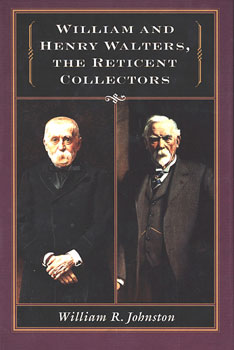George W. Howard in (1873) The Monumental City gave a snapshot of the post-Civil War whiskey business in Baltimore, Maryland:
It is known (Daniel Adams in Geography, etc., 1818) that “vast quantities” of rye grain were being turned into whiskey in Maryland by that year. Sixty years on the industry was being rapidly recast on a modern technological footing. Indeed ever larger, post-artisan distilleries took root in Maryland between 1873 and the end of the century as documented in James Bready’s classic 1990 article on the heritage of Maryland whiskey.
Due to both distilling and the sizeable wholesaling, rectification, and blending businesses in Maryland, fine whiskey was an established product of Maryland’s economy in the last quarter of the 1800s. True, Prohibition sentiment was growing rapidly but whiskey-making, while certainly not loved by all parts of the populace, had a legitimate place in Maryland industry in that period.
One of the most important Baltimore dealers was the Walters family, of whom I wrote in 2010 on a U.S. bourbon forum:
… Walters was a family who made their fortune initially in liquor dealing and retailing (not distilling). Later, they branched into railroad and financial investments. Baker’s rye was one of their reputed brands in the mid-1800’s, it was Pennsylvania rye, a classic type of rye whiskey, country cousin to bourbon. Rye whiskey is still sold…. When the heiress and descendant Mrs. Walters died in the 1940s, her estate sold the collection of fine spirits remaining after the liquor business had long ended, or that had been acquired on the way by her ascendants. It included wines, brandies, and many other spirits, but also some of the rye whiskey that had helped to make the family’s name and fortune. Foremost among those was Baker’s rye…. Indeed the Walters Museum [in Baltimore] is still going strong and houses the fine art collection the family had amassed…. My information is from a Walters family history which you can buy at the museum.
William Walters was the founder, and both he and son Henry expanded the family’s reach into other businesses. I visited the Walters Art Museum in 2010 and bought a book in its shop, William and Henry Walters, The Reticent Collectors, by William R. Johnston. It’s a fine read and highly recommended.
Below, from George Howard’s 1873 book, is a Walters agency advertisement, and note the reputed Baker’s brand is mentioned.
The bracketing of rye whiskey with Cognac brandy shows the high status fine rye whiskey had achieved later in the 19th century. By the Walters’ time, rye was no longer simply a rude, frontier drink. Common whiskey, un-aged or little aged, and young bourbon served that function more than rye, or the rye which made the Walters’ reputation, certainly.
George Howard explained that the best rye whiskey was sent to the deep South. This surely assisted the later association of the Sazerac cocktail with rye. The Manhattan cocktail, too, had a strong association with straight rye, and both cocktails have received new life with the renewed interest in American whiskey and cocktails history.
In particular “Eastern rye”, vs. that made in Kentucky and environs, had a high reputation for quality. In part this was due to the method of production, involving as it did sweet mash fermentation and heated warehouses. But also, sophisticated blending and rectification ensured these drinks had long left the precincts of firewater.
The careful selection and blending of whiskey became a high art in gracious old Baltimore, a city formerly renowned for its gastronomic heritage based on the crab, the turtle, hominy, and much else. Maybe the whiskey dealers’ long experience with French blending methods and Cognac impelled them to adopt similar methods to reign in the rambunctious character of American straight whiskey, although the truth is surely lost in the mists of time.
It’s interesting that Kentucky, in contrast, proudly supported its native Bourbon and disdained the blends. And such has remained the case to this day. I except blends of straight whiskey, which the Marylanders brought to a high art, and were known in Kentucky as well, and am referring to blends that combined straight whiskey with neutral spirit.
And there isn’t anything wrong with Kentucky Bourbon, certainly. But the whiskey market in the Walters’ heyday was one of great variety. A choice was offered for different palates and different pocketbooks. Maryland straight rye stood proud in that pantheon.



